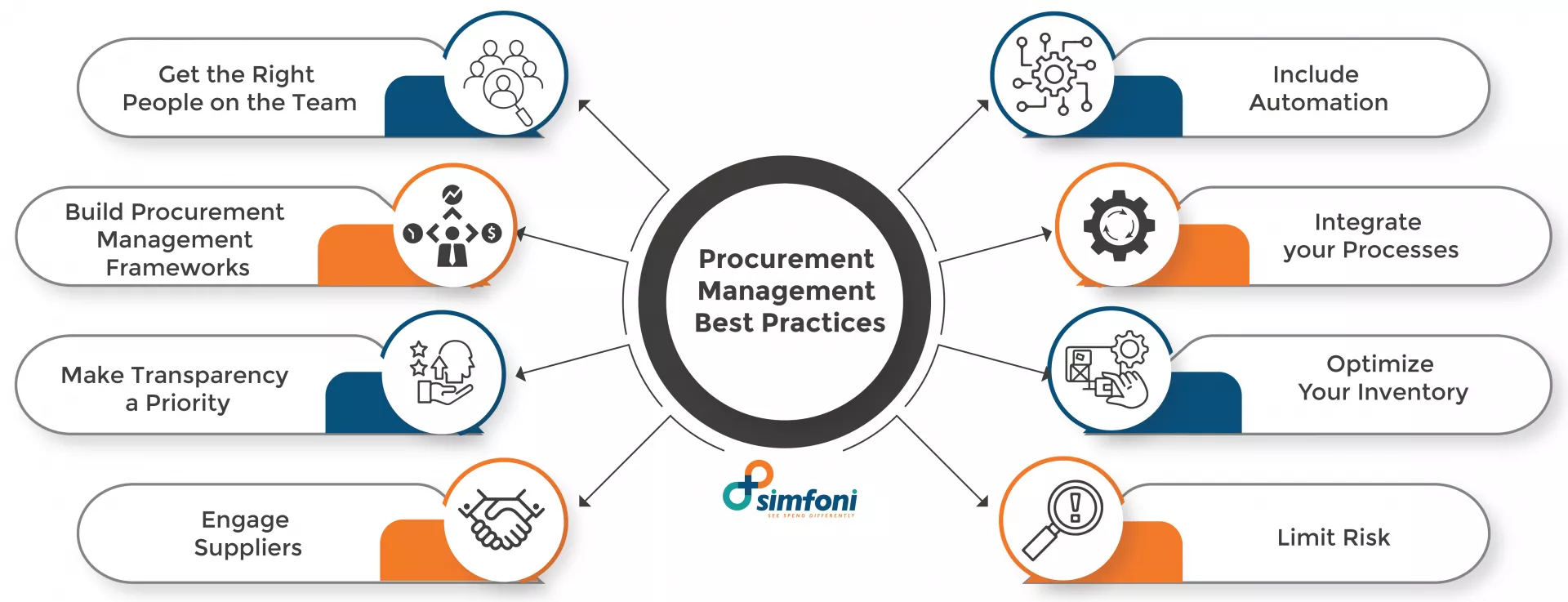Table of Contents
What is Procurement Management?
Procurement is the strategic acquisition of goods and services necessary for a company’s operations. It is a multi-step process that involves identifying needs and sourcing suppliers, right up to payment and recordkeeping.
Procurement is more than just buying things for the business. Every department within a business will have needs, in the form of goods or services. A large part of the business’s budget goes toward fulfilling these needs.
A good procurement process is important to optimize costs, manage risks and ensure alignment with business objectives. Automation is key to a streamlined procurement process. Solutions like RazorpayX Source to Pay have revolutionized the supply chain.
Importance of Procurement
 Procurement plays a vital role in the success of any organization. It acts as the backbone of efficient operations, ensuring that the necessary resources are obtained at the right time, in the right quality, and at the best possible cost.
Procurement plays a vital role in the success of any organization. It acts as the backbone of efficient operations, ensuring that the necessary resources are obtained at the right time, in the right quality, and at the best possible cost.
Effective procurement strategies contribute significantly to cost optimization. Through strategic sourcing, negotiation, and vendor management, procurement professionals can secure the most favorable pricing and contract terms, leading to substantial cost savings for the organization.
Furthermore, a well-established procurement function safeguards the quality and consistency of acquired goods and services. By meticulously vetting potential suppliers, establishing clear quality standards, and implementing robust risk management practices, procurement professionals ensure that the organization receives reliable and high-quality resources, ultimately contributing to customer satisfaction and overall business success.
In essence, optimized procurement fosters a robust and resilient supply chain, laying the foundation for sustainable growth and competitive advantage.
Steps in Cloud-based Procurement Process
The traditional procurement process, often manual and paper-based, can be cumbersome and prone to errors. Cloud-based procurement solutions streamline the process and enhance efficiency.
- Initiation and Collaboration: The process begins with identifying a need and submitting a purchase requisition through a centralized dashboard. This dashboard facilitates easy collaboration, allowing users to attach relevant documents and specifications. Approvers can then access and review requests electronically, expediting the decision-making process.
- Streamlined Sourcing and Selection: Cloud-based procurement software simplifies vendor management. The platform enables building a comprehensive vendor database, facilitating efficient sourcing by matching needs with qualified suppliers. Additionally, features like online bids and automated comparison tools streamline the selection process, ensuring optimal choices based on pre-defined criteria.
- Effortless Order Management and Tracking: Once a supplier is chosen, the platform simplifies order creation and communication. Electronic purchase orders (POs) can be generated and sent directly to vendors, eliminating manual paperwork and reducing errors. Real-time order tracking features provide transparency and improve communication throughout the fulfillment process.
By leveraging the cloud for procurement, organizations can experience numerous benefits, including increased efficiency, improved cost control, enhanced transparency, and streamlined collaboration. This modern approach empowers procurement teams to focus on strategic initiatives and contribute significantly to the organization’s success.
Procurement Management Role in a Business
Procurement management plays a pivotal role in ensuring the smooth functioning of any organization. It acts as the conductor of the business orchestra, meticulously sourcing the necessary goods and services to keep operations running seamlessly.
This critical function entails a multifaceted approach. Firstly, procurement professionals meticulously vet and select qualified suppliers, ensuring that acquired resources meet the organization’s quality and ethical standards. They then leverage their negotiation expertise to secure the most favorable pricing and contract terms, optimizing the organization’s financial resources.
Furthermore, effective procurement management goes beyond simply obtaining resources at the best price. It encompasses building and maintaining strong relationships with key vendors. By fostering collaborative partnerships, procurement professionals can secure long-term benefits, such as reliable supply chains, innovative solutions, and continuous improvement opportunities.
In essence, the procurement management role is vital for safeguarding operational efficiency, maximizing cost optimization, and fostering a resilient supply chain. It’s a strategic function that contributes significantly to the organization’s overall success and competitive advantage.
Future of Procurement Management
Thanks to advancements in technology, the role of the Chief Procurement Officer (CPO) has undergone a significant transformation. Previously, the position was largely focused on technical aspects of procurement. However, the advent of artificial intelligence (AI) and machine learning (ML) has automated many routine tasks, such as vendor evaluation and price negotiation.
This automation has shifted the focus of the CPO role towards more qualitative areas, as noted by Abe Eshkenazi, CEO of the Association for Supply Chain Management. He emphasizes that the CPO can now dedicate their energy to “qualitative, communication, and leadership functions.”
By freeing up their time from repetitive tasks, CPOs can focus on strategic initiatives like risk scenario planning, minimizing total cost of ownership, and fostering innovation across the entire procurement landscape. This evolution underscores the increasing importance of the CPO as a strategic business partner, driving value beyond cost optimization.
High-growth businesses are all turning to automated procurement processes like RazorpayX Source to Pay, streamlining the entire supply chain with the power of automation and AI.
FAQs
What are the types of procurement?
Procurement can be categorized in two main ways: by the purpose of the acquired goods or services, and by the nature of those items. Based on purpose, we have direct procurement, which involves acquiring goods directly used in the production of a company's final product, and indirect procurement, which involves acquiring goods that support daily operations but aren't directly used in the final product. Looking at the nature of the items, we have goods procurement, which focuses on physical items like raw materials or office supplies, and services procurement, which focuses on acquiring services like legal advice or marketing expertise.
What does a procurement manager do?
A procurement manager acts as a strategic buyer for their company, ensuring they get the best value for goods and services. They source and select qualified suppliers, negotiate contracts, and manage supplier relationships. This involves overseeing the entire procurement process, from identifying needs to finalizing purchases, all while aiming to optimize costs and secure the resources needed for the company to thrive.
What is the procurement cycle?
The procurement cycle is the process of acquiring goods and services your organization needs. It involves identifying the need, sourcing suppliers, negotiating terms, placing orders, receiving deliveries, and making payments. An efficient cycle ensures cost-effectiveness, quality, and timely delivery.
How to automate procurement?
Implement software for tasks like requisition creation, vendor selection, and approvals. Utilize a single platform for managing documents, communications, and procurement data. Automate repetitive tasks like data entry, routing approvals, and generating purchase orders.
What is the difference between purchasing and procurement?
While purchasing and procurement both involve acquiring goods and services, they differ in scope and focus. Purchasing is a transactional aspect of procurement, encompassing activities like order placement, price negotiation, and receiving goods. It's a short-term, focused process ensuring the "five rights" of purchasing: right quality, quantity, cost, time, and place. Procurement, on the other hand, is the broader umbrella term encompassing everything from identifying needs and selecting suppliers to managing contracts and supplier relationships. It takes a long-term strategic perspective, aiming for cost optimization, risk mitigation, and overall value creation for the organization.





